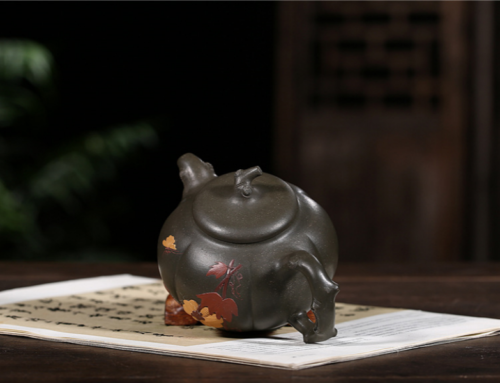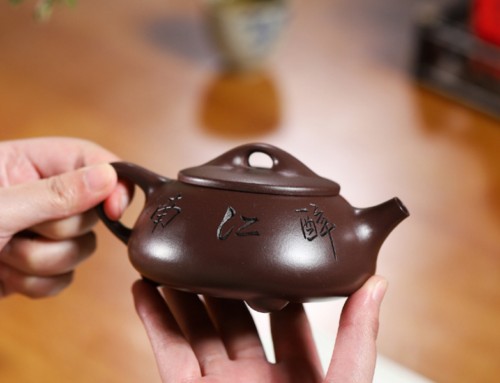Korean Tea Pottery and Asian Tea Pots : Craft and Class
Introduction
Tea is not just a beverage for many Asian countries. It is a ritual, art and of course, lifestyle. Korean tea wares and Asian tea pots are one of the oldest methods of brewing tea. Known for its rich quality, Korean tea wares and Asian tea pots give the most classical approach to drinking tea. It’s profound history and immaculate skills embedded into each tea material. Korean tea wares and Asian Tea Pots are hand crafted and made by pottery masters.
The unique styles, intricate patterns, and superb craftsmanship of the pottery and teapots have captivated tea enthusiasts and collectors around the world. What makes Korean tea ceramics and Asian teapots so special? And how can it elevate the tea drinking experience, while serving as a testimony of art and refinement? In this guide, we’re taking a dive into the rich history, the distinctive craftsmanship and the timeless appeal of the pottery and teapots—and why the pottery has been a staple in the tea culture.
By delving into their history, craftsmanship, and functional roles, you’ll be able to deepen your appreciation and understanding of how these creations harmonize the ritual of making and drinking tea. Whether you’re a collector, tea enthusiast, or lover of the fine arts, this guide will inspire you to enjoy the craftsmanship and elegance of Korean tea-ware and Asia teapots.
Historical Background
Korean tea ceramics and Asian teapots have their own history. The history of Korean tea ceramics and Asian teapots have their own history. Tea ceramics have existed for thousands of years as has the practice of tea drinking that originated in China and later disseminated to other Asian countries, such as Korea and Japan. Korean traditions in the creation of tea ceramics began during the Three Kingdoms Period (57 BC – 668 AD) as early Korean forms and styles were in part influenced by preexisting Chinese ceramics. Developments persisted over the Silla (57 BC – 935 AD), Goryeo (918–1392), and Joseon (1392–1897) periods as Korean potters innovated upon predetermined methods and techniques. They implemented their own distinct characteristics by delivering styles such as celadon ware during the Goryeo Dynasty and buncheong pottery during the Joseon Dynasty.
Meanwhile, in Asia teapots followed a different path. Developed in China during the Song Dynasty (960–1279), the first teapots were made from Yixing clay. This type of clay is a porous material that helps to retain heat and enhance flavour. Asian teapots evolved to be used as functional tools for the brewing and serving of tea. As tea became more popular throughout Asia, different styles and shapes of teapots began to appear, representing the varying aesthetics of each culture.
| Column 1 | Column 2 |
|---|---|
| Column 1 Value | Column 2 Value |
Cultural Influence on Design
The design of Korean tea ceramics and Asian teapots is influenced by the cultural traditions and philosophy of their respective regions. In Korea, tea ceramics often reflect a sense of subtle beauty and simplicity, influenced by Confucian ideals of modesty and harmony. Nature-inspired patterns, such as plum blossom and bamboo, symbolize resilience and renewal.
Teapots from Asian countries differ markedly from each other, because each reflects the tea-drinking traditions of the area where it was made. Examples of this are:

Tea ceramics and teapots become the objects that the ethos and the values are appreciated through their design.
Craftsmanship: The Essence of Elegance
Materials and Techniques
The beauty of Korean tea ceramics and Asian teapots lies in the materials and methods used to create them. Artisans often choose high-quality clay, porcelain, or stoneware, each contributing unique characteristics to the final product. Clay, for instance, retains heat well, making it ideal for teapots. Porcelain, on the other hand, offers a delicate, translucent appearance, perfect for tea cups and teaware.
The process of creating these ceramics is extremely intricate, requiring wheel-thrown, hand-sculpted and glazed. Among these, the glazing process is particularly important as it gives ceramics both durability and a unique finish. Korean celadon is distinguished by its ‘jade’-like green colour – created by covering a clay body made from iron-rich soil with a translucent glaze. Buncheong likewise utilises a transparent glaze, this time allowing the brushstrokes and stamped designs of the artisan to shine through.
Handcrafting remains at the heart of Korean Tea Ceramics and Asian teapots, with each individual piece being one-of-one. Using an assortment of different crafting techniques, artisans craft, etch, and kiln teaware—While much time, effort, and expense is used in creating small-batches or single tea-ceramics (such as teacups and teapots) over the course of several weeks and months, the artisan’s sheer dedication in their work shows within every minute and elegant detail.
In recent times modern technologies like precision molding and digital glazing have introduced even more consistency to design, but others stay rooted in traditional methods, understanding that even the slightest imperfections add distinct beauty and character to a hand-crafted piece. This interplay of tradition and novelty is part of what allows Korean tea ceramics and other Asian teapots to remain an integral part of modern tea aesthetics.
Iconic Styles and Cultural Significance
Korean Tea Ceramics
Korean tea ceramics are characterised by their unadorned elegance and simple forms deliberately designed to serve a practical purpose. They also reflect the Korean tea culture itself, which seeks to reflect those very virtues. Most notable and immediately recognisable styles are celadon and buncheong pottery.

Korean tea ceramics are inextricably linked to its rituals. Their forms are marked by an unpretentious purity and balance of form that adds to and facilitates the experience of the serenity and unostentatious simplicity of Korean tea drinking.
Asian Teapots
The teapots in Asian cultures are incredibly varied in style, reflecting the nature of the tea cultures which spawned them. Chinese teapots are often classical or ornate in style, with intricate carvings or calligraphy. Japanese teapot design often focuses on simple beauty and practical functionality, such as the kyusu teapot, which has a handle on the side for
Korean teapots, on the other hand, place value on minimalism and practicality. A hallmark of Korean teapots is their smooth and clean lines that work harmoniously with tea consumption. Fundamentally, all Asian teapots fundamentally share their common dedication to enhancing tea flavors and scents, while also expressing beauty and personality.
Whether used for ritual or utility, the teapot serves more than its primary function in how it embodies traditions and cultural identities.
Buying and Caring for Korean Tea Ceramics and Asian Teapots
Buying Guide
Purchasing Korean tea ceramics and Asian teapots can be a fascinating but daunting task with the plethora of options available on the market. Here are some tips to help you make the most informed decision when out looking to buy for authentic pieces and or for high-quality goods.

By following these guidelines, you can confidently choose pieces that are both beautiful and functional, adding a touch of elegance to your tea ceremony or collection.
Maintenance Tips
Proper care is essential to preserve the beauty and functionality of Korean tea ceramics and Asian teapots. Here’s how to keep your teaware in pristine condition:

With these easy maintenance tips, your teaware will be part of your tea ceremony for years to come.
Conclusion
The world of Korean tea ceramics and Asian teapots is a rich embodiment of the lasting beauty and artistry upon which these teaware traditions are founded: profoundly historical, yet ever evolving and relentlessly innovative.
Whether it’s a more private Korean style of celadon or the elaborate drawings on Chinese Yixing teapots, the ceramics show the cloth traditions and artistic dedication of the people who produced them. It’s these ceramics and teapots themselves that enhance teatime and provide their users with the culture and knowledge of tea as well.
For all tea lovers, collectors and beauty seekers, Ooul provides a space for you to enjoy Korean tea ceramics and Asian teapots. Works in this material have a freshness and free spirit that wins the heart of people around the globe. Knowing the history, mastery of the skill and meaning behind the ceramics will enrich your appreciation towards such great works. Whether enjoying a green tea or simply gawking over a teapot, we hope you can take a moment to reflect on the unique care and quality of such amazing artisan works.







